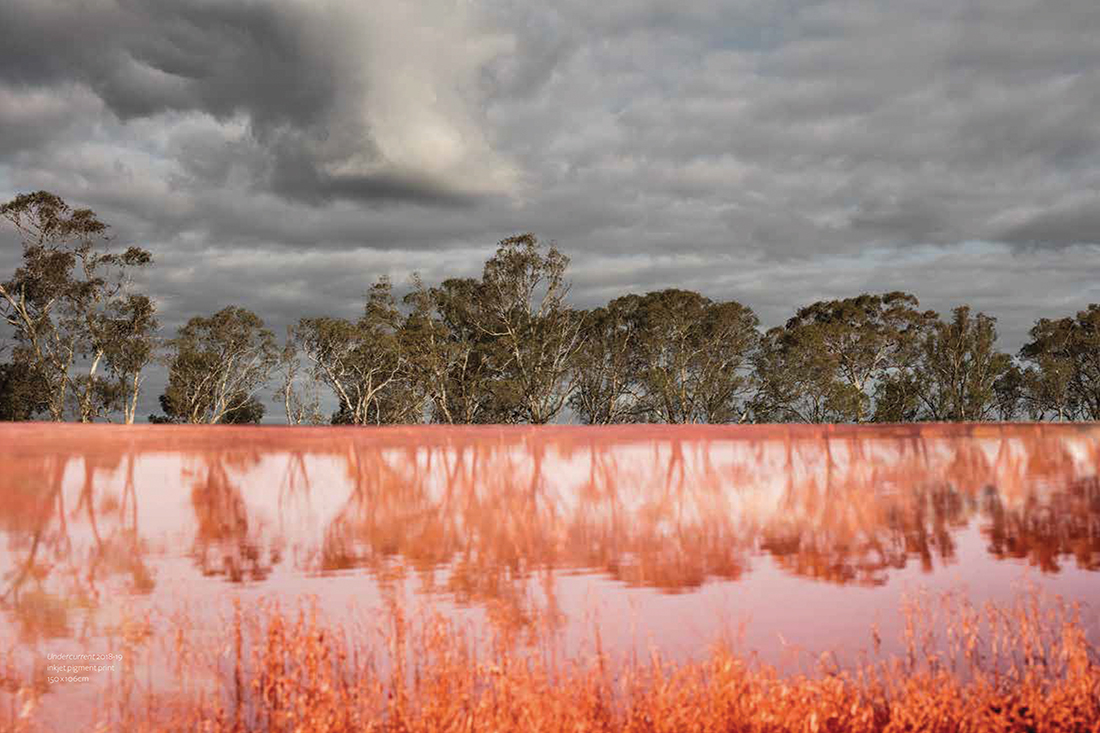
Echoes in the Landscape
Michael Brennan looks at the practices of three indigenous artists whose work connects us with Australia’s revered landscape.
Most of us are aware that Australia’s First People have been identified as the longest living continuous culture on the planet. Indigenous Australians have lived on this continent for tens of thousands of years, with many estimates suggesting that this continuance could be upwards of 50,000 years. If you believe that the broader Australian population that has unfolded since colonisation has a history with sites that are worth recognising and protecting (think maybe Port Arthur or even the birthplace of the Ashes), then imagine for a moment the extent and the significance of meaningful places that exist that are important to the stories and culture of First Nation’s people.
It is undeniable that the landscapes that colonisation has created often bear little visual resemblance to what was there before a European incursion. Vast tracts of land have been cleared and concreted and the courses of waterways have been shifted. Three current exhibitions at Noosa Regional Gallery, however, remind us that the presence of First Nation’s culture in the landscape is always there. These artists ask us to look at the environments we’ve manufactured and pay attention to the echoes of First Nation’s culture and history in the landscapes we occupy today.
Peta Clancy is a Bangerang artist living on Wurundjeri Woi Wurrung Country. In 2019 she undertook a residency through the Koorie Heritage Trust which saw her work with Dja Dja Wurrung Traditional Owners to research and develop a series of photographic works which explore and document frontier violence and massacre sites that exist on Dja Dja Wurrung Country. Clancy’s sensitive yet haunting images capture sites of mass murder which are now under water as a result of rivers and creeks being re-routed and damned. These concealed, watery graves reflect the hidden nature of the violence that has been inflicted upon Indigenous Australians as a result of colonisation. Clancy runs a physical incision through her prints before making them whole again, the scar a symbol and reminder of the trauma inflicted.
Kent Morris is a Barkindji man living on Yaluk-ut Weelam Country. His photographs look at interactions between native birds and built environments, mirroring and echoing fragments of the compositions he captures to create new forms which reveal the continuing presence of Indigenous culture in the contemporary Australian landscape. Morris gives us striking graphic compositions based in documentary photography which recall patterns evocative of Aboriginal history, knowledge and culture, and its enduring presence in the land.
And closer to home, Sara Jane Moore embraces a multidisciplinary art practice. A proud First Nation’s woman with connection to Gumbaynggirr peoples, now living on Gubbi Gubbi Country, Moore works with the stuff of the earth itself, creating an installation in the gallery space which invites viewers to scratch their own marks into ochre applied directly to the gallery wall. The material that falls to the floor is then gathered by the artist in a Coolamon, cycling into a subsequent art work in another space, an historical connection running through the projects and those who add their mark.
These three exhibitions form part of a larger project, highlighting First Nation’s artists and practices across the broader South East Queensland North region. Connecting Stories celebrates the thriving of First Nation’s history and culture across Country. While histories and events – many of which were deplorable – might not be signposted, their latency in the landscape still deserves recognition. These artists help us see the spaces we inhabit through a First Nation’s lens and remind us of the enduring presence of Indigenous history and culture.
What’s On
Peta Clancy, Undercurrent
Kent Morris, Unvanished
Sara Jane Moore (aka Ochre Bee), Energetic Ochre Activation
Noosa Regional Gallery, 26 March to 16 May 2021
The full Connecting Stories program can be found at
www.connectingstories.net



